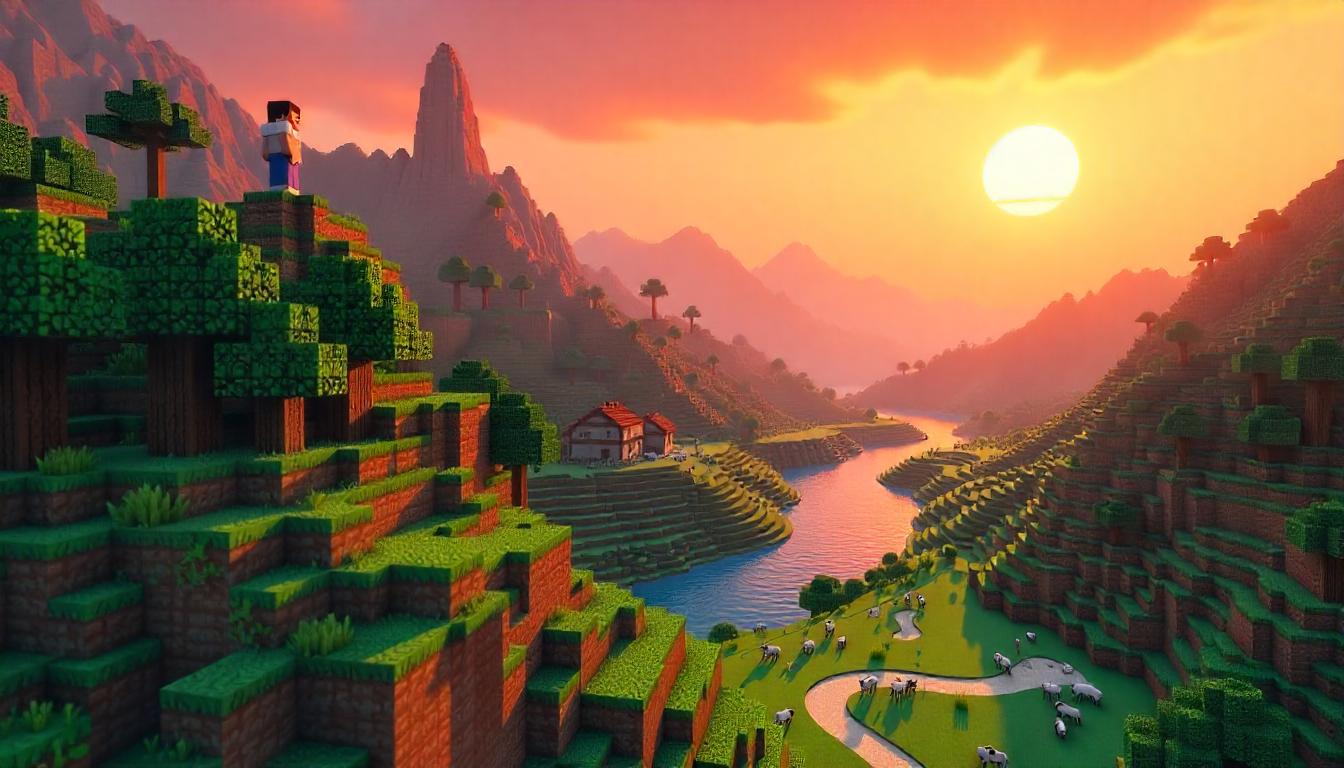Minecraft is a globally popular sandbox game that allows players to explore, build, and survive in a blocky, procedurally generated world. Developed by Mojang Studios, it offers various game modes, including Survival, Creative, and Adventure. Players can craft tools, construct massive structures, battle mobs, and even modify the game with custom content. With limitless possibilities, Minecraft remains a favorite among gamers of all ages.
Introduction
Minecraft is more than just a game; it is a phenomenon that has captured the hearts of millions of players worldwide. Developed by Mojang Studios and initially released in 2011, Minecraft provides an open-world sandbox experience where creativity, exploration, and survival combine seamlessly. Whether you’re crafting weapons to fight off zombies, building grand castles, or exploring infinite landscapes, Minecraft delivers an ever-evolving experience that continues to attract new players every day.
1. History & Development of Minecraft
Minecraft was originally developed by Markus “Notch” Persson in 2009 and later expanded by Mojang Studios. The game officially launched in 2011, quickly gaining immense popularity. Microsoft acquired Mojang in 2014 for $2.5 billion, further developing the game with frequent updates, new features, and compatibility across multiple platforms.
2. Game Modes
Minecraft offers various game modes, each catering to different play styles:
a) Survival Mode
- Players start with nothing and must gather resources to survive.
- Health and hunger bars require players to eat food and avoid dangers.
- Mobs such as zombies, skeletons, and creepers pose threats at night.
- Mining for ores, crafting tools, and building shelters are essential for progress.
b) Creative Mode
- Unlimited resources allow players to build anything without restrictions.
- No health or hunger mechanics, making it a stress-free experience.
- Players can fly, build massive structures, and experiment with redstone mechanics.
c) Adventure Mode
- Designed for custom maps with set rules, often used in story-driven experiences.
- Limited block-breaking ability to encourage interactive gameplay.
d) Hardcore Mode
- A more challenging version of Survival Mode with perma-death (one life only).
- If players die, their world is deleted permanently.
e) Spectator Mode
- Players can explore the world without interacting with it.
- Useful for watching multiplayer matches or exploring map creations.
3. Gameplay Mechanics
a) Resource Gathering & Crafting
- Players gather wood, stone, and ores to craft tools and structures.
- The crafting system allows for making weapons, armor, and redstone contraptions.
b) Building & Construction
- Blocks can be placed and destroyed to create houses, castles, or entire cities.
- Some players have recreated real-world landmarks within Minecraft.
c) Redstone & Automation
- Redstone, Minecraft’s equivalent of electricity, allows for complex machinery.
- Players create automated farms, elevators, and even working computers.
d) Mobs & Combat
- Hostile mobs like skeletons, creepers, and endermen spawn at night.
- Players can fight using swords, bows, and even enchanted weapons.
- The Ender Dragon and Wither are two of the game’s biggest bosses.
e) Exploration & Biomes
- Minecraft has an infinite world generation system.
- Different biomes include forests, deserts, tundras, and oceans.
- Hidden structures such as villages, strongholds, and ancient cities offer treasure.
f) Nether & End Dimensions
- The Nether is a dangerous underworld with lava, ghasts, and fortresses.
- The End is the final dimension where players battle the Ender Dragon.
4. Multiplayer & Online Features
a) Servers & Multiplayer Worlds
- Players can join public or private servers for a shared experience.
- Minigames such as SkyWars, BedWars, and Parkour maps are popular online.
b) Realms & Co-op Play
- Minecraft Realms allows players to create persistent multiplayer worlds.
- Friends can build and survive together without setting up private servers.
c) Mods & Customization
- The Minecraft modding community creates new features, mechanics, and visuals.
- Mods range from graphical improvements to new creatures and dimensions.
5. Education & Cultural Impact
a) Minecraft in Education
- Minecraft: Education Edition is used in schools to teach STEM subjects.
- Encourages problem-solving, teamwork, and creativity in classrooms.
b) YouTube & Streaming Influence
- Many YouTubers and streamers gained fame by creating Minecraft content.
- Popular series like Hermitcraft and speedruns attract millions of viewers.
c) Cross-Platform Accessibility
- Available on PC, consoles, mobile devices, and VR.
- Cross-play allows players to connect regardless of their device.
6. Future of Minecraft
a) Regular Updates & Expansions
- Mojang frequently releases updates, adding new blocks, mobs, and mechanics.
- The Caves & Cliffs, Wild Update, and upcoming features keep the game fresh.
b) Community-Driven Growth
- Minecraft thrives on player creativity, with fan-made content shaping the game.
- Marketplaces allow creators to sell skins, maps, and resource packs.
Conclusion
Minecraft is more than just a game—it’s an endless universe of creativity, adventure, and survival. With constant updates, a vibrant community, and limitless possibilities, it remains one of the most influential games of all time. Whether you’re a builder, explorer, or warrior, Minecraft offers something for everyone.
Would you like me to add any specific details or customize this further?
